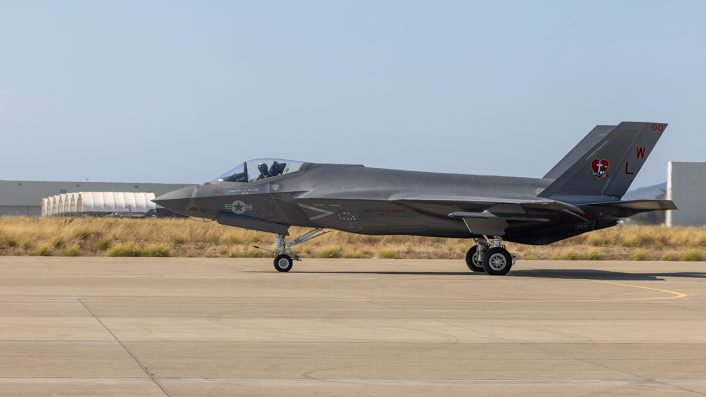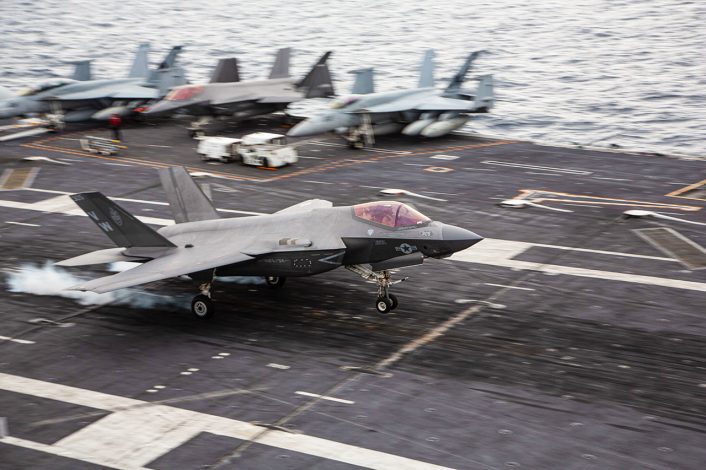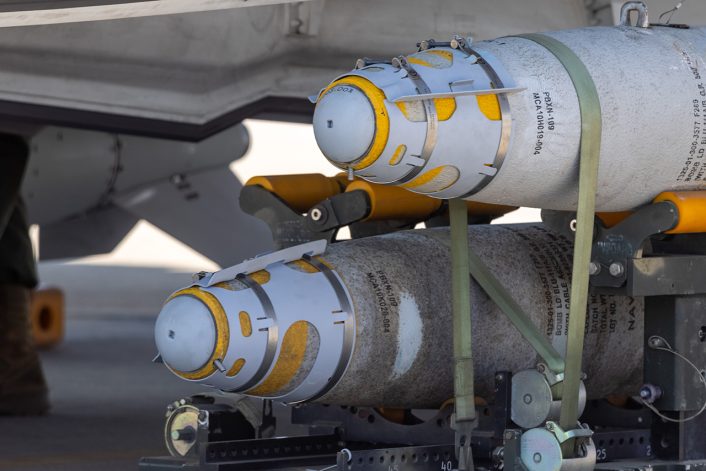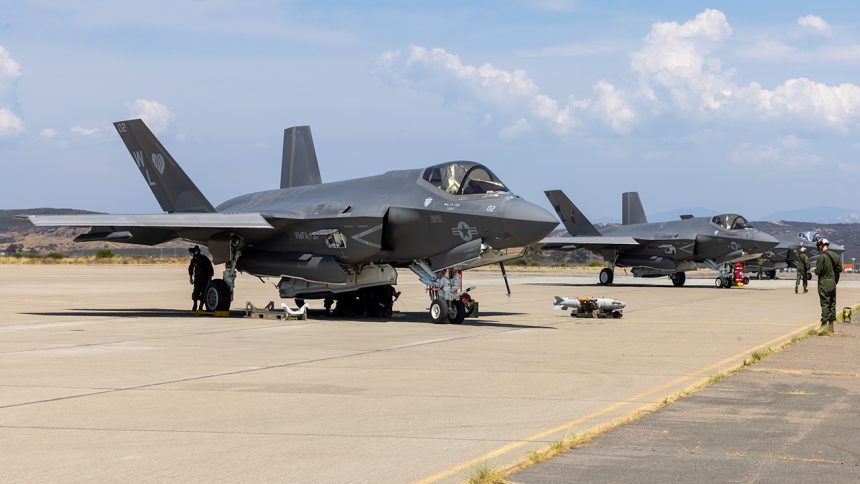Marine Fighter Attack Squadron (VMFA) 311 has become the newest F-35 squadron in the U.S Marine Corps to declare initial operating capability (IOC).
VMFA-311, which is assigned to Marine Aircraft Group 11, 3rd Marine Aircraft Wing, declared IOC on July 31, 2024. This means the unit has received enough F-35 aircraft, generated enough personnel and trained them to a sufficient degree to conduct mission essential operations.
Known as the Tomcats, VMFA-311 stood up as an F-35C Lightning II squadron on Apr. 14, 2023 with one aircraft and eighty four Marines, working alongside the USMC’s existing operational F-35C unit to move towards the IOC milestone. Until disbanding in 2020, the squadron was known as VMA-311 and operated the AV-8B Harrier II.

Reaching IOC was a culmination of over 900 sorties, totalling more than 1700 flight hours. FOC, or full operating capability, is scheduled to be declared in 2025 when the squadron receives the remaining jets it needs for its full planned complement of 10 F-35Cs.
In total, the U.S Marine Corps currently has fourteen active F-35 squadrons. Twelve of these are equipped with the F-35B STOVL variant, with the remaining two, VMFA-314 and VMFA-311, operating the F-35C. The F-35C variant is the CATOBAR variant, able to be launched from an aircraft carrier catapult and recovered with an arresting wire. These squadrons are the successors to USMC F/A-18C/D Hornet units which deploy alongside U.S. Navy squadrons on board the service’s nuclear-powered Nimitz class and Gerald R. Ford class aircraft carriers.
The USMC plans to operate the Hornet until 2030, but a number of squadrons have already been disbanded in order to convert to either F-35B or F-35C units. VMFA-314 were the first former Hornet unit to change to the F-35C. VMFA-251 is set to stand up as an F-35C unit in 2025, and VMFA-115 will follow by 2027.

As part of the journey to declaring IOC, VMFA-311 personnel took part in some of the U.S. military’s most renowned training programs. Aviation ordnance officer Warrant Officer John Page completed the seven week Marine Corps Weapons and Tactics Instructor Course based at MCAS Yuma, Arizona, and pilot Major Timothy Potter graduated from the famous TOPGUN program, officially known as the U.S. Navy Strike Fighter Tactics Instructor Program.
While TOPGUN is today based at NAS Fallon, Nevada, at the time of the original 1986 movie the school was located at NAS Miramar, now MCAS Miramar, California, which currently happens to be the home base of VMFA-311.
One of the final milestones before declaring IOC was the completion of a live ordnance training exercise on July 25 from Miramar. This was the squadron’s first independent sortie involving the use of live ordnance, obviously an important capability to certify for an operational unit.

Commenting on the U.S. Marine Corps’ transition to an all-fifth generation fighter fleet, Lt. Col. Michael Fisher, commanding officer of VMFA-311 said: “As a previous F/A-18 Hornet pilot, the F-35 is our bid for success for the future… …It is where the Marine Corps is going for TACAIR.”.
VMFA-311’s notable history, dating back to December 1942, includes being one of the first USMC units to operate jet fighter aircraft. The squadron has seen operational service during the Second World War, Korean War and Vietnam War, and also took part in Operations Desert Storm, Enduring Freedom and Iraqi Freedom. During Desert Storm, the Tomcats became the first American unit to use the AV-8B Harrier II in combat. The squadron’s Harriers were also the first of the type to fly missions over Afghanistan during Operation Enduring Freedom, and then in 2010 became the last Harriers to fly in Operation Iraqi Freedom.
While flying with the squadron during the Korean War, the then future astronaut John Glenn earned the nickname ‘magnet ass’ after returning from many of his sixty three combat missions with holes in his F9F Panther from flak guns. Nine years later aboard the spacecraft Friendship 7, Glenn would become the first American astronaut to make a full orbit of the Earth.
Alongside the Panther and Harrier, other aircraft types previously operated by VMFA-311 include the F4U Corsair, F9F Cougar and A-4 Skyhawk.









